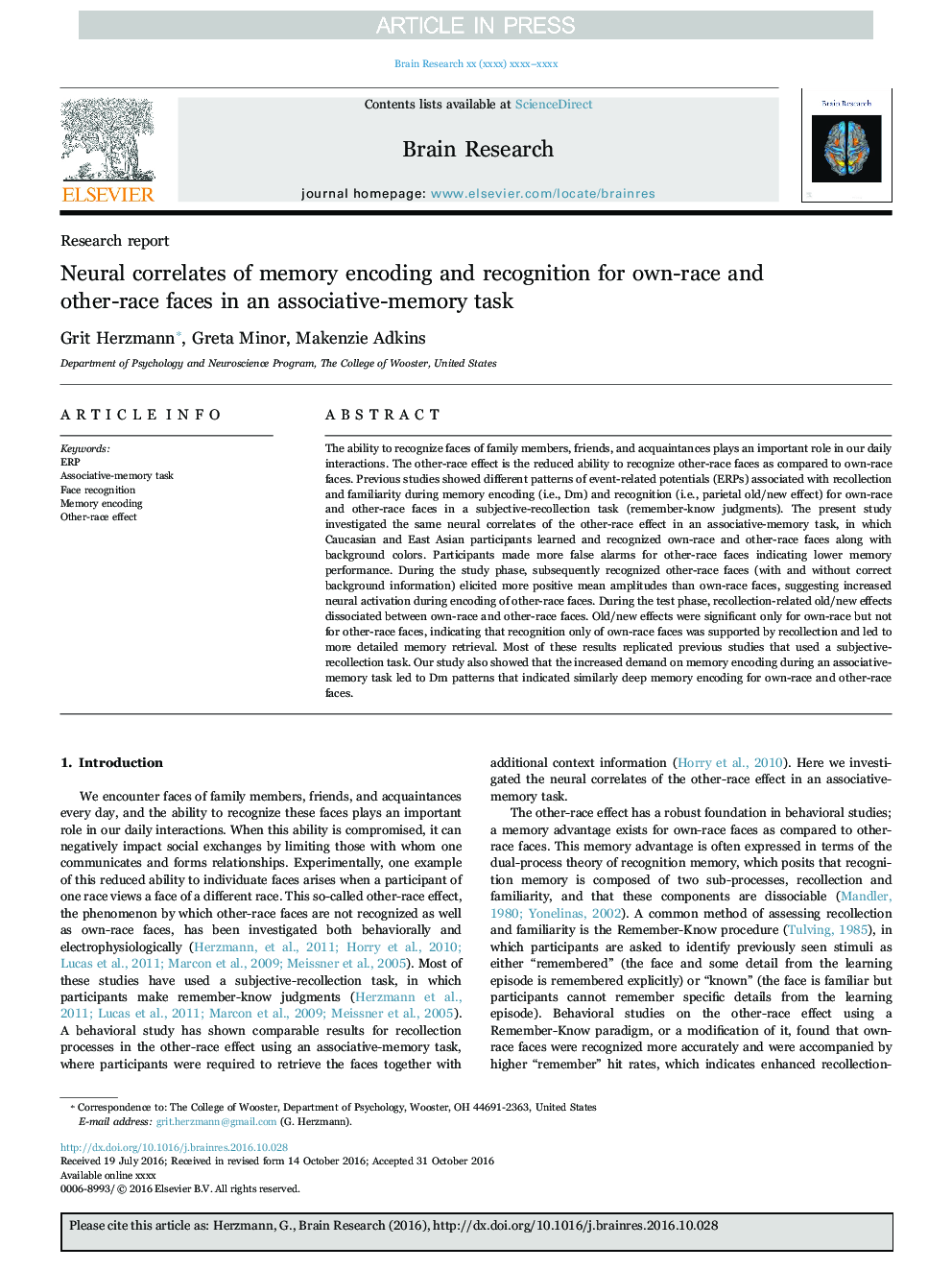| Article ID | Journal | Published Year | Pages | File Type |
|---|---|---|---|---|
| 5736865 | Brain Research | 2017 | 10 Pages |
Abstract
The ability to recognize faces of family members, friends, and acquaintances plays an important role in our daily interactions. The other-race effect is the reduced ability to recognize other-race faces as compared to own-race faces. Previous studies showed different patterns of event-related potentials (ERPs) associated with recollection and familiarity during memory encoding (i.e., Dm) and recognition (i.e., parietal old/new effect) for own-race and other-race faces in a subjective-recollection task (remember-know judgments). The present study investigated the same neural correlates of the other-race effect in an associative-memory task, in which Caucasian and East Asian participants learned and recognized own-race and other-race faces along with background colors. Participants made more false alarms for other-race faces indicating lower memory performance. During the study phase, subsequently recognized other-race faces (with and without correct background information) elicited more positive mean amplitudes than own-race faces, suggesting increased neural activation during encoding of other-race faces. During the test phase, recollection-related old/new effects dissociated between own-race and other-race faces. Old/new effects were significant only for own-race but not for other-race faces, indicating that recognition only of own-race faces was supported by recollection and led to more detailed memory retrieval. Most of these results replicated previous studies that used a subjective-recollection task. Our study also showed that the increased demand on memory encoding during an associative-memory task led to Dm patterns that indicated similarly deep memory encoding for own-race and other-race faces.
Related Topics
Life Sciences
Neuroscience
Neuroscience (General)
Authors
Grit Herzmann, Greta Minor, Makenzie Adkins,
